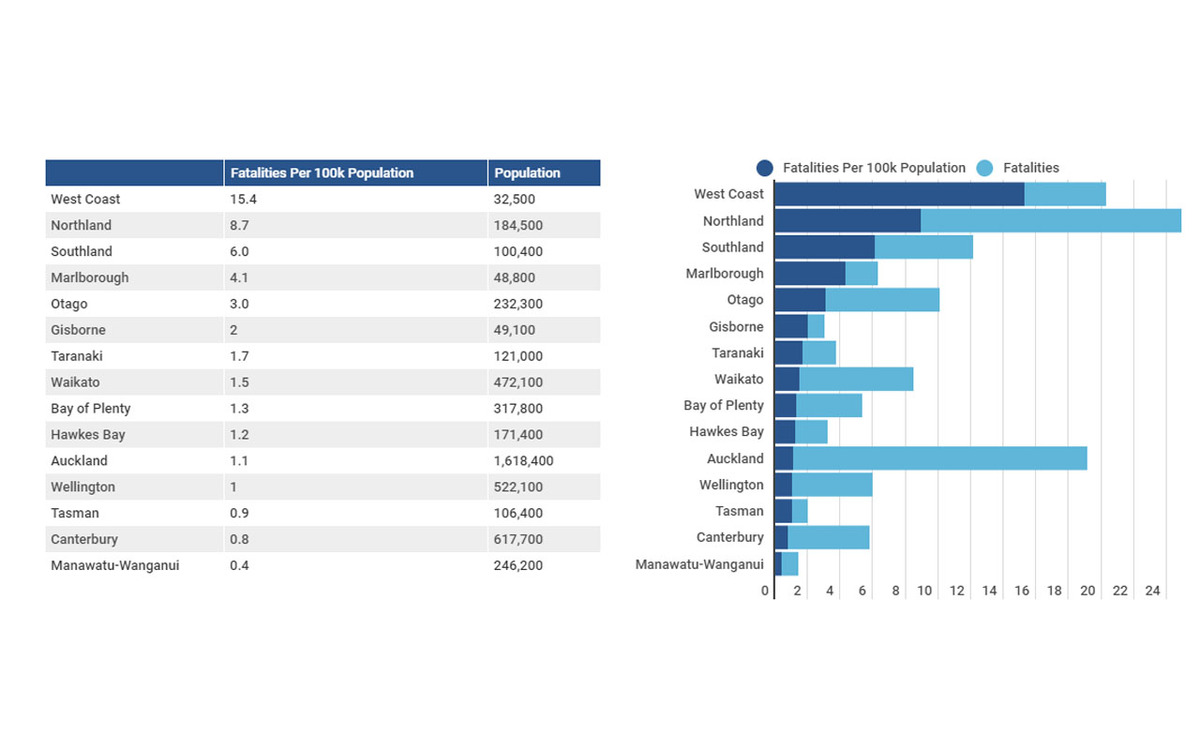Southland ranks in the highest risk regions for drowning
03 September 2020, 12:38 AM
 Statistics from the Drowning Report 2019. GRAPHIC/WATER SAFETY NZ
Statistics from the Drowning Report 2019. GRAPHIC/WATER SAFETY NZSouthland ranks in the highest risk regions for drowning, per head of population, according to the Drowning Report 2019 released by Water Safety New Zealand this week.
The highest risk regions were the West Coast, Northland and Southland; with 15.4, 8.7, and 6.0 preventable drowning fatalities per 100,000 population respectively, the report says.
In 2019, there were 82 recreational (intending to be in the water) and non-recreational (no intention of being in the water) preventable drowning fatalities.
There was an increase of 16, or 24%, compared to the 66 preventable drowning fatalities in 2018.
The 2019 total was more than the 2014 – 2018 Five Year Average of 79 and less than the 2017 total of 91, the report said.
Auckland saw the highest total drowning fatalities with 18.
But the West Coast saw the highest per capita rate with 15.4 deaths from a population of 32,500.
Southland had six fatalities (population 100,400) and five hospitalisations from drowning-related incidents.
Northland saw a significant increase in preventable drowning fatalities going from eight in 2018 to 16 in 2019.
Bay of Plenty dropped over 50%, going from 10 fatalities in 2018, to four in 2019.
Male preventable drowning fatalities increased from 48 in 2018 to 67 in 2019, sitting close to the 2013-2017 average (66).
There were 15 female preventable drowning fatalities in 2019, the same as the 2013-2017 average, and an improvement on the 2018 figure (18).
Water Safety New Zealand chief executive Jonty Mills said in a statement that drowning is the leading cause of recreational death and the third highest cause of accidental death in New Zealand.
As well as the 82 preventable drowning fatalities, there were another 203 drowning-related hospitalisations in 2019.
Mr Mills said the drowning toll is trending down when compared to New Zealand’s growing population.
“[Still] every year too many people lose their lives or are injured in New Zealand in preventable drowning incidents.
“Families and communities are left devastated and this has real and profound impact on many people’s lives.
“While our waterways are our playground they can be incredibly unforgiving and need to be treated with respect.
“The toll reflects the complex nature of drowning in this country. Drowning is not one dimensional. The numbers represent a wide range of age, ethnicities, activities and water environments,” Mr Mills said.
READ THE FULL REPORT: https://drowningreport19.watersafety.org.nz/
AG | TRADES & SUPPLIES



